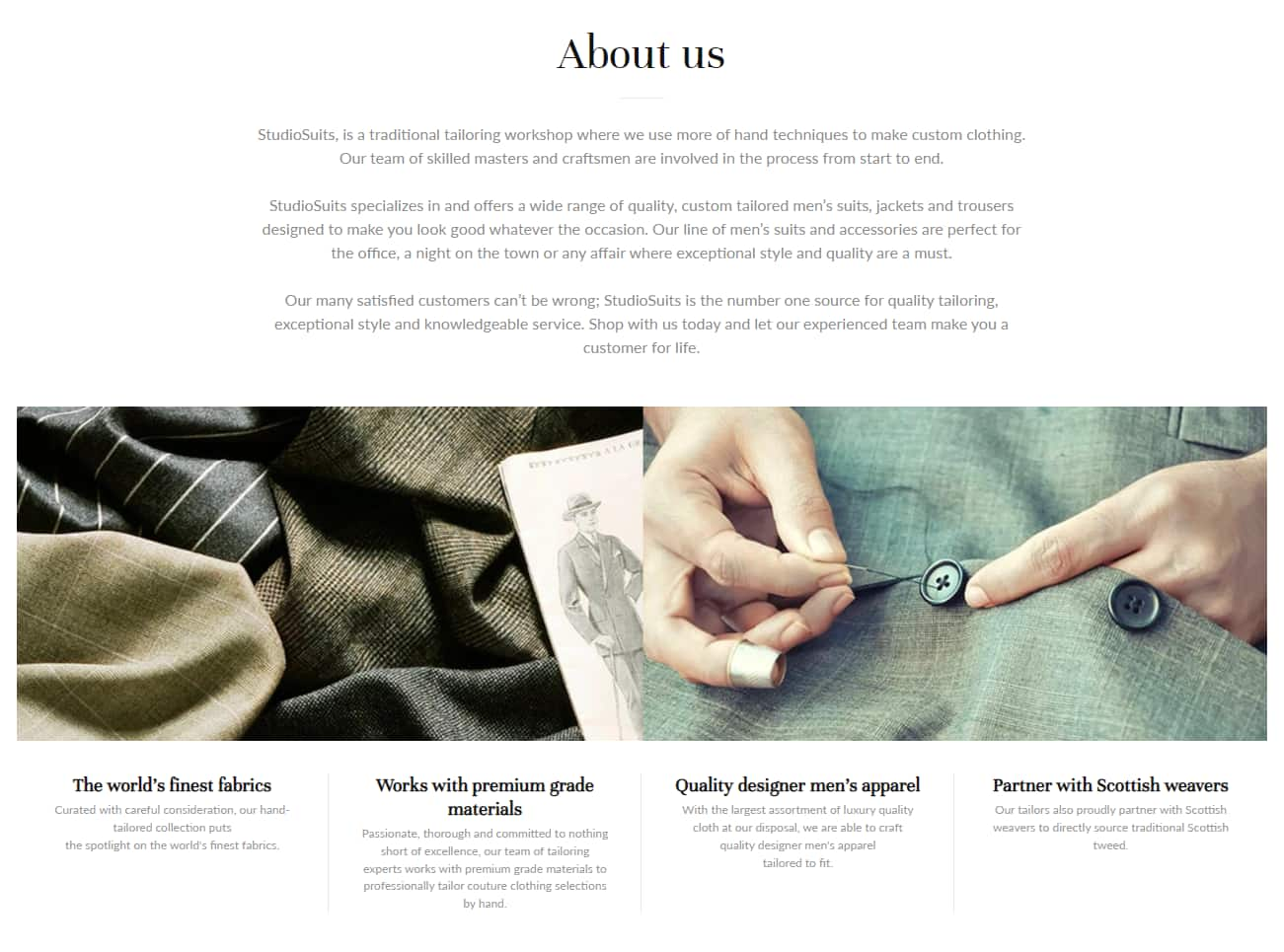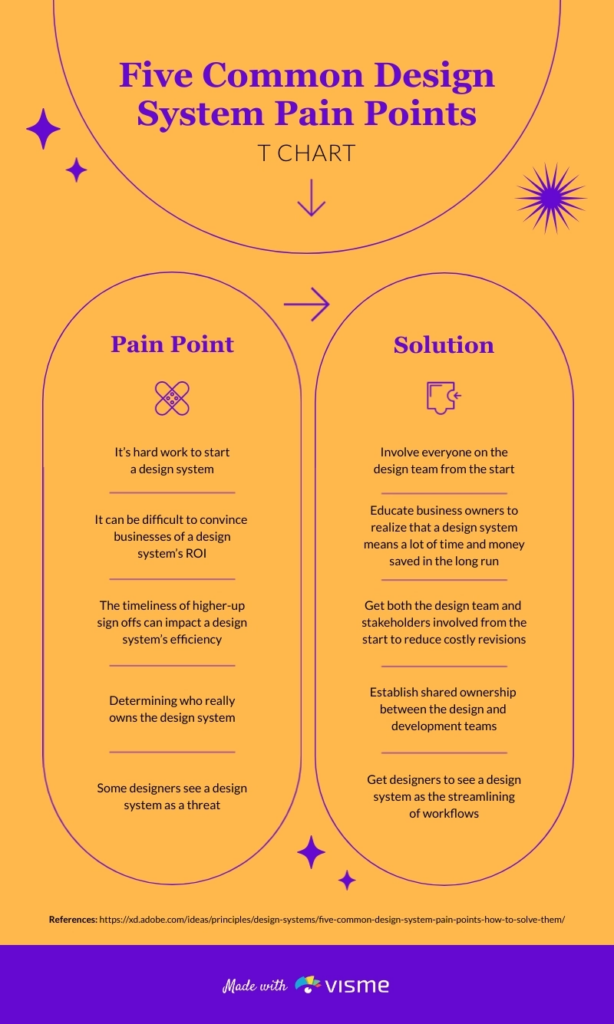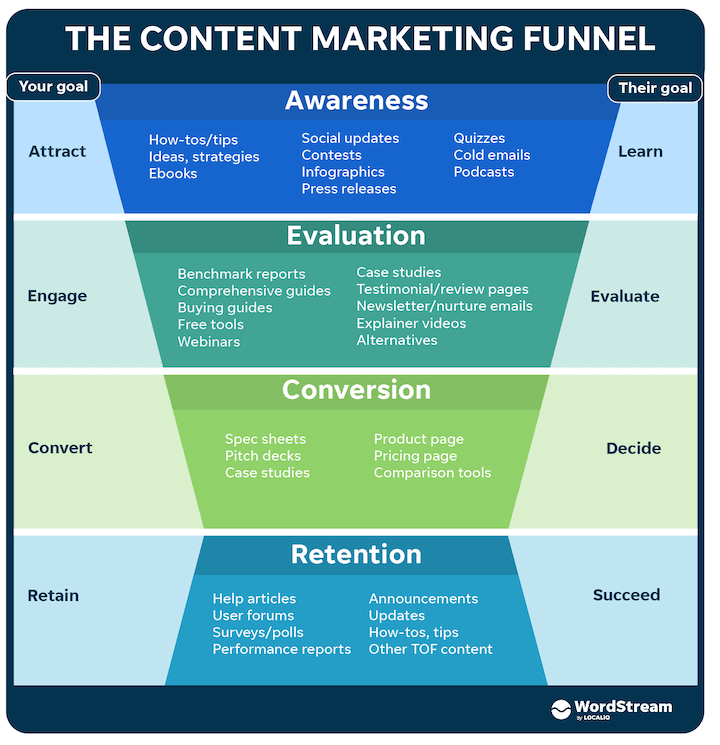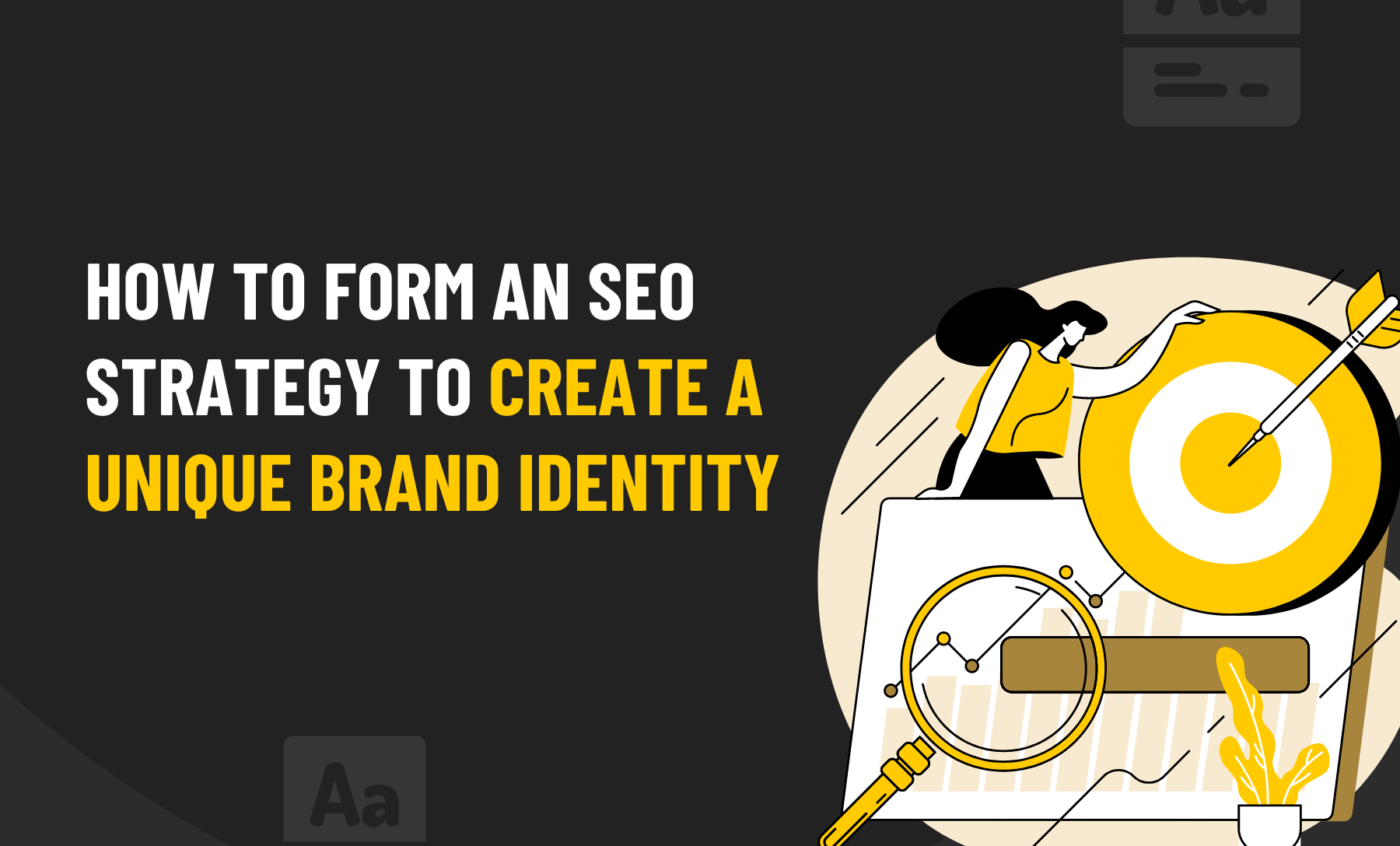1. Start with your brand vision
Creating a notable brand identity starts with the ability to call in your dream customer. But if you don’t know where you stand, how can you expect to create content that aligns with a core audience?
So, in step one, start by outlining your long-term business goals.
Where do you see your brand two, five, and 10 years from now? Why did you start your business in the first place? What’s your mission statement? What’s your value statement?
Answer these questions in-depth. Then, summarize them in a “Brand Vision Overview” document.
Here’s an example:
Brand Vision Overview
Our mission
Our mission is to become a luxury brand renowned for making the highest quality linen suits.
Our value proposition
We help passionate people design quality linen suits built to last a lifetime. Wear our suits for travel, work, or play, and enjoy peace of mind with our lifetime quality warranty.
Why we started our business
We started our business after years of not being able to find a quality linen suit maker that allows shoppers to design fully customized suits.
Where we see our business in two, five, and 10 years
- In two years: We’d like to have a solid multi-channel marketing foundation and a growing audience.
- In five years: We’d like to expand to international markets and increase our sales outreach efforts.
In 10 years: We’d like to have a global empire with successful online and physical stores worldwide.

2. Outline your buyer personas
Now that you know who you are and where you’re going, grab another document and outline your buyer personas.
Buyer personas are imaginary people you create to represent a few core members of your target audience — complete with faux names and fictional customer profiles.
For instance, if we go with the brand example from above, the buyer personas could include:
Brad
- Age: 47 years old
- Job title: Accountant
- Interests: Loves to ski in the winter
- Habits: Spends Christmas in New York City every year
- Purchase history: Buys linen suits every Spring to stock up for work events
- Pain point: Having trouble finding linen suits that don’t get ruined at the dry cleaners.
- How our brand can help: Guarantee suit quality by highlighting our lifetime warranty.
- Where Brad lives online: LinkedIn, email, and Twitter.
Gena
- Age: 26 years old
- Job title: Professional keynote speaker
- Interests: Bookworm
- Habits: Goes to Florida with the family every Summer
- Purchase history: Buys linen suits monthly for keynote speeches
- Pain point: Finding the right fit.
- How our brand can help: Delegate a personal designer to help create the perfect fit.
- Where they live online: Instagram, TikTok, and Etsy
Willow
- Age: 32 years old
- Job title: Wedding planner
- Interests: Loves to scuba dive
- Habits: Travels to Paris every Fall
- Purchase history: Buys linen suits any time they’re on sale to wear to weddings
- Pain point: Having trouble finding material that doesn’t hold onto stains.
- How our brand can help: Recommend our stain-proof linen material.
- Where they live online: Pinterest, Instagram, and online blogs
Once you’re finished creating your buyer personas, head to the next step.
3. Create a pain point vs solution overview
Now that you’re clear on who your brand serves, dig a bit deeper into your target audience’s pain points.
What’s your audience struggling with? Why do they need your support?
If you can effectively base your SEO strategy on these answers, you can position your brand as the go-to solution to your audience’s problems (and encourage more sales).
So, grab the pain points you listed in your buyer personas and any others you discover in targeted SERP research, customer feedback, and poll/survey results.
Then create a pain points-versus-solutions overview.
For instance, if you’re a career coach, then one of your audience’s pain points is most likely “struggling to find work.” In this case, one of your solutions could include “offering job resources that show who’s hiring in your area”.
Here’s a quick example of a pain points-versus-solutions overview based on this industry use case:
Pain Points vs. Solutions Overview
- Struggling to find a career path ▶️ Present career discovery coaching
- Nervous about upcoming job interviews ▶️ Offer job interview prep classes
- Terrible at writing pointed resumes ▶️ Invite prospects to attend a resume-building workshop
Refer to your overview to plan:
- Knowledge base article topics, i.e., “How our career discover package works”
- Blog article topics, for instance: “X ways to prep for an interview”
- Social media content topics — for example, “What to expect at our resume-building workshop”
- Email marketing content topics, i.e., “How to discover a new career path”
- Targeted calls to action (CTAs) to use throughout your SEO content, for instance: “download our free interview prep guide”
Pro tip: Not sure how to conduct targeted SERP research that drives real results? Hire an SEO strategist or content agency for support.

4. Plan your topic clusters
Grab the topics you planned in step three and use them to plan content clusters or “groups” of content with relatable subject matter.
On the technical side, you’ll need to organize your content around topics into pillar and cluster pages. You’ll also need to create an internal linking plan and accompanying website structure to tie everything together. If you haven’t done this before, contact a strategist for support.
For instance, let’s say you’re planning clusters for a sales blog.
In this case, you could include a content hub page that breaks down various sales strategies and links to blog posts covering relevant subtopics.
Your subtopics could cover how to create competitive battlecards, set up an internal sales deck, plan outreach calls, host product demos, and other sales tactics.
Once you’re finished planning your topic clusters, create an official document that outlines your:
- Pillar pages
- Cluster pages
- Internal linking plan
- Accompanying website structure
- Content hub page main topics
- Blog post subtopics
- Knowledge base article subtopics
Pro tip: Plan topic themes with relatable subtopics for email marketing and social media marketing campaigns.
5. Plan content that caters to prospects in your marketing funnel
At this stage, you’ve come a long way in the SEO strategy process.
But you’re not quite done yet.
To truly cater to and attract your ideal audience, you need to implement an SEO plan that supports them in all stages of the marketing funnel.
That means …
▶️ Supporting top-of-the-funnel prospects with introductory content assets so they can discover your brand.
▶️ Supplying middle-of-the-funnel leads with in-depth content to help them understand how you solve problems better than the competition.
▶️ Supporting bottom-of-the-funnel prospects with gentle nudges toward conversion, personalized CTAs, and tailored offers.
For instance, let’s say you sell wellness products, supplements, pharmaceuticals, and physician consultations online, and your target audience includes middle-aged people and retirees that identify as men. Partnering with Digital Silk can elevate your online presence, ensuring your offerings resonate with the specific needs and preferences of middle-aged men and retirees.
In this case, some of your marketing funnel content topics could include:
▶️ Top-of-the-funnel (ToFu) content: “X skincare supplements you don’t want to skip after 60”, “Why you need a new multivitamin”, “Why low testosterone levels affect energy (and what to do about it)”.
▶️ Middle-of-the-funnel (MoFu) content: “The ultimate guide to finding a new primary care doctor”, “A retiree’s guide to mental illness (and how to get the support you deserve)”, “The truth behind antidepressants (and when to schedule a mental health check-up)”.
▶️ Bottom-of-the-funnel (BoFu) CTAs: “Buy Sildenafil online today”, “Schedule your free consultation”, “Get 20% off your first order”.
Bonus SEO strategy tips
In case you want to go the extra mile, here are some additional SEO strategy tips:
- Repurpose your SEO content assets in your multi-channel marketing campaigns.
- Create a workflow to remind your content team to include low-hanging SEO fruit in SEO content, such as metadata, accessibility information, internal links, etc.
- Collect social proof, brand mentions, and company stats to use as trust elements in your marketing funnel content.
- Differentiate your SEO content by conducting interviews, experiments, and research. Use this information to create case studies, demonstrate your expertise, and highlight quotes from expert sources.

Wrap up
Congratulations! You’ve officially created an SEO strategy with your unique brand and target audience in mind.
Now it’s time to implement your strategy, track your results, and adjust as needed. Save this article for any time you need to create or revamp your SEO strategy.
Here’s to your success!








